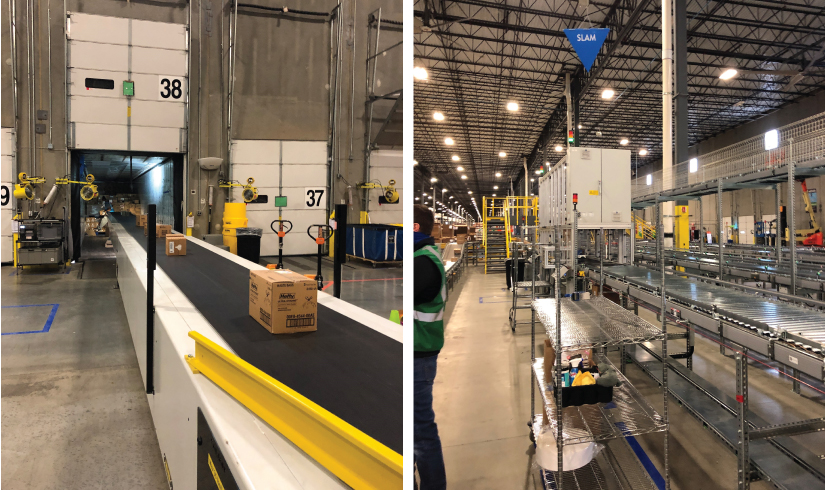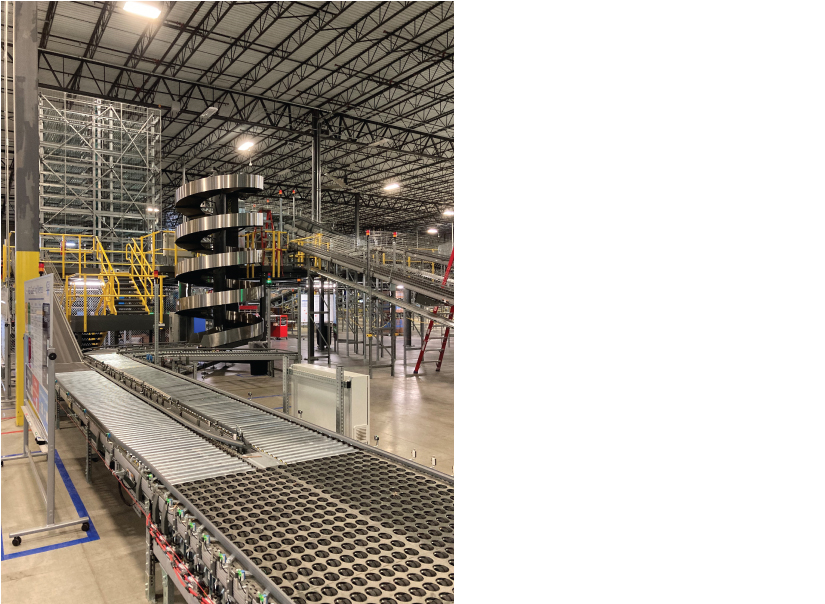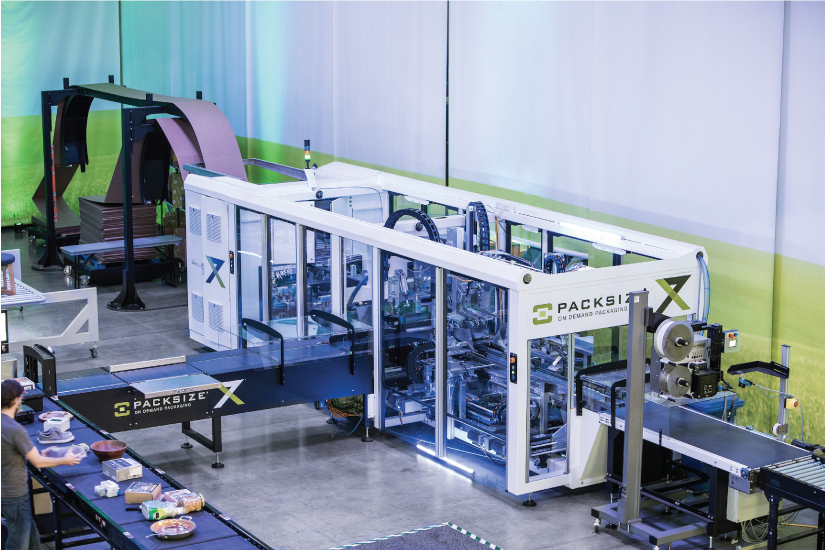The need for automated technology inside warehouses continues to grow; this technology often requires changes to be made within the warehouse layout. Based on our experience working on warehouse and fulfillment projects, we’ve discovered several key learnings for design considerations related to the automation technology equipment. Beyond considering how the equipment fits in the space, there are often design implications for each type of piece.
Here are some of the key design considerations based on the different types of automation:
Loading/Unloading
The loading and unloading of trucks require the use of a telescoping boom conveyor that extends into the trailer. The boom conveyor telescopes further into the trailer as the truck trailer is unloaded, which increases the efficiency of the loading/unloading process. Due to the cantilevered design of the boom, a thickened slab or foundation is required where the boom conveyor is bolted/mounted to the concrete slab. A thickened slab is a common solution in new construction. When the slab already exists, a portion of the existing slab would be removed, and a the construction team would add an optimized foundation to counteract the forces of the boom conveyor.

Conveying
A conveyor is the primary type of equipment or technology used to automate warehouse processes. Conveyors reduce the staff’s dependency on forklifts and pallet jacks to move products around the warehouse. However, a sophisticated network of conveyors requires careful planning, programming and design to create an efficient delivery process. Conveyor layout also requires a keen understanding so as to understand the clearances required to convey the product safely and to allow for future maintenance. The density and complexity of the conveyors plays a significant role in how warehouse managers calculate travel distance and developing a life safety plan for the employees within the warehouse. With any additions made to a conveyor system, the life safety plan should be revised to ensure building occupants can safely exit the building during an emergency evacuation.
Package Tracking & Scanning
When products enter the warehouse, they are immediately scanned, typically from their barcodes or labels required to track and manage the inventory in the warehouse. If the product is new inventory, the warehouse team often diverts the product to another area for additional scanning. This step allows the team to record dimensions and weight — data that will be used to maximize storage density and accurately estimate size of the shipping container required. Improved inventory management and tracking reduces human error and time required to process an order. Understanding the flow of inventory through the warehouse requires knowledge of the scanning equipment – and where it should be placed — to achieve a successful design.

Box Making & Labeling
Automated box making machines construct a right-size box for shipping. Similar to a conveyor layout, the layout of the box machines requires careful planning, programming and design to create an efficient process for suppling boxes at the appropriate time and location needed to fill an order. The right-size box is selected based on the number and size of products ordered and also the statistics collected by the scanning process; data which is stored in the inventory management system. The box making machine requires a supply of corrugated cardboard and additional area to store replenishment materials, which are transported to the storage area by a PIT (powered industrial truck).
If a PIT exists, it is typically battery powered and therefore requires a battery charger/station for operation. And finally, the pneumatic design of the box making machine requires an air loop connected to a compressor farm in order to providing adequate air flow and pressure across the loop.

The final step in the process typically involves automatic labeling – where the system determines the most economical method for shipping. The machine prints and places a label on the box and then directs the package to the appropriate outbound dock door/trailer for shipping. A knowledgeable warehouse designer can help determine which outbound dock doors should include multiple shipping options, therefore providing the customer with delivery options based on speed or cost.
We would be remiss if we did not address the latest technology in warehouse and fulfillment design, which is Automated Storage and Retrieval Systems. AS/RS often results in additional design revisions to most current industrial buildings. For additional factors related to this topic, look for Part 2 in our series.
About the author:
Bart Brown, AIA, graduated from the University of Kansas with a Bachelor of Architecture & Urban Design degree. Bart helps lead our Bentonville team, and has more than 30 years of experience working on retail, grocery, fitness center, industrial and other commercial projects. He is a key asset in mentoring young professionals, and shares knowledge gained from his years of practice working through all architectural design and production phases. Bart has also been a key resource for project teams carrying out building evaluation services for sites that have experienced environmental distress or failure. Email him.



